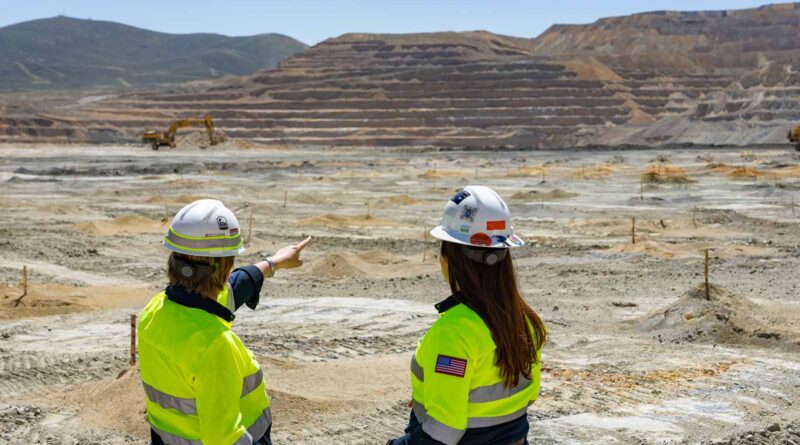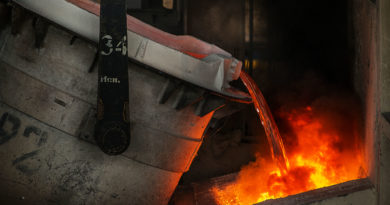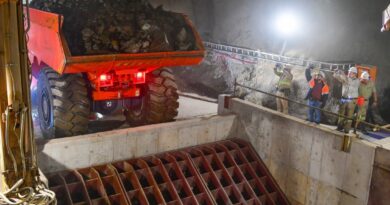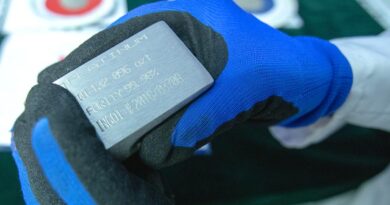Barrick grows gold and copper reserves significantly as it positions for growth
TORONTO – Barrick Gold Corporation grew attributable proven and probable gold mineral reserves by 17.4 million ounces (23%) before 2024 depletion. Attributable proven and probable mineral reserves now stand at 89 million ounces at 0.99g/t, increasing from 77 million ounces at 1.65g/t in 2023. The year-on-year change was led by the conversion of Reko Diq copper-gold resources to mineral reserves, adding 13 million ounces of gold at 0.28g/t on an attributable basis, following the completion of the feasibility study. Significantly, before the addition of Reko Diq, Barrick delivered a fourth consecutive year of replacing annual depletion at a 4% higher grade, continuing to demonstrate the results of an unremitting focus on asset quality and further extending the life of our existing operations.
Since the end of 2019, Barrick has replaced more than 180%4 of the company’s depleted gold reserves, adding almost 46 million ounces4 of attributable proven and probable reserves (77 million ounces4 of proven and probable reserves on a 100% basis) across Barrick-managed assets.
Attributable measured and indicated gold resources for 2024 remain consistent, at 180 million ounces at 1.06g/t, with a further 41 million ounces at 0.9g/t2 of inferred resources, up 5% from 2023.
At the same time, copper mineral reserves grew by 224% year-on-year on an attributable basis, at more than 13% higher grade to 18 million tonnes of copper at 0.45%2, from 5.6 million tonnes of copper at 0.39% in 20233. This resulted from the completion of the Lumwana and Reko Diq feasibility studies affirming both as Tier One6 Copper projects. The Lumwana Super Pit Expansion feasibility study added 5.5 million tonnes of copper reserves to the project, resulting in proven and probable copper reserves of 8.3 million tonnes of copper at 0.52%2. The Reko Diq feasibility study added 7.3 million tonnes of copper at 0.48% to attributable copper reserves. This represents an addition of more than 20 million tonnes2 of proven and probable copper reserves on a 100% basis since 2023.
Attributable measured and indicated copper resources for 2024 stand at 24 million tonnes of copper at 0.39%2, with a further 3.9 million tonnes of copper at 0.3%2 of inferred resources, reflecting the conversion and upgrade of copper mineral resources at Lumwana.
For 2024, mineral reserves are based on an updated gold price assumption of $1,400/oz1 and a consistent copper price of $3.00/lb1. Mineral resources are reported inclusive of reserves and for 2024 are based on an updated gold price of $1,900/oz1 and a consistent copper price of $4.00/lb1.
President and chief executive Mark Bristow said Barrick’s strategy of investing in organic growth through exploration and mineral resource management has set the company apart from its peers within the industry, positioning Barrick as a champion for value creation as we continue to grow our production profile organically.
“In order for our industry to help build a better world, we have to invest in our own future, with transformational projects like the Lumwana Super Pit Expansion, Pueblo Viejo Expansion, Reko Diq and Fourmile. Barrick’s vision for these projects extends beyond mining, ensuring the benefits of these investments provide multi-generational benefits to our host countries and local communities through the development of local service provider partnerships and investment in the sustainability of our operating environments,” said Bristow.
Mineral Resource Management and Evaluation Executive Simon Bottoms said that since the end of 2019, Barrick has successfully added 111 million ounces4 of attributable gold equivalent reserves at a cost of approximately $10 per ounce5, demonstrating the value proposition of our strategy.
“The company’s reserve prices of $1,400/oz for gold1 and $3.00/lb for copper1 are designed to extract the optimum value from our geologically defined orebodies whilst delivering the highest value, demonstrating the quality differentiation of our Tier One6 assets. This approach is complemented by our reserve replacement strategy, where we aim to add value by delineating ore body extensions and satellites at our long-term reserve prices rather than diluting the quality of our reserves through lifting reserve prices beyond the relative levels of cost inflation,” said Bottoms.
Gold mineral reserves in the Africa & Middle East region, after annual depletion, grew to 19 million ounces at 3.35g/t2 in 2024 from 18.8 million ounces at 3.24g/t3 in 2023. This was predominantly driven by both Bulyanhulu and Loulo-Gounkoto, with extensions of the high-grade Reef 2 and Yalea underground orebodies respectively, combined with growth of the Faraba open pit. Overall, this delivered a 2.3 million ounce2 increase in attributable proven and probable reserves across the region, before depletion. North Mara also contributed to the strong results through the extension of the Gokona underground and Gena open pit. At Kibali, the ongoing conversion drilling in the 9000 and 11000 lodes in KCD underground replaced 98% of depletion, with ongoing development to establish further underground drill platforms for 2025.
The Latin America & Asia Pacific region, led by Pueblo Viejo, replaced 115% of the regional 2024 gold reserve depletion before the addition of Reko Diq, which added 0.78 million ounces2 to attributable proven and probable reserves before depletion as a result of additional pit design pushbacks unlocked by the additional TSF capacity in the new Naranjo facility. Porgera grew attributable gold reserves by 22% year-on-year with the successful conversion of the open pit Link cutback adjacent to the West Wall cutback.
In North America, the ongoing growth programs at Turquoise Ridge, Leeville Underground in Carlin and the Reona cut-back in Phoenix, added 1.54 million ounces2 of gold to proven and probable reserves on an attributable basis before annual depletion, which were partially offset by reductions in Cortez driven by metallurgical model updates in Crossroads and Robertson. This resulted in attributable proven and probable mineral reserves for the region of 30 million ounces at 2.71g/t2, representing a more than 10% increase in the grade year-over-year (2.45g/t in 2023) as a result of the high-grade growth additions and reductions of low-grade at Cortez. At the same time, attributable gold measured and indicated mineral resources for the region now stands at 66 million ounces at 2.18g/t2, due to the removal of Long Canyon mineral resources, as the site is planned to progress into full closure during 2025. Meanwhile, attributable inferred gold mineral resources for the region grew to 21 million ounces at 3.3 g/t2, driven by Fourmile’s mineral resource7 growth in the southernmost portion of the orebody immediately adjacent to the existing Goldrush mine. Looking forward to 2025, Barrick plans to commence prefeasibility-study drilling at the end of the first quarter of 2025 which will target continued extension of the Fourmile mineral resource along strike to the north, while also completing the foundational studies for the planned Bullion Hill northern access portal.




